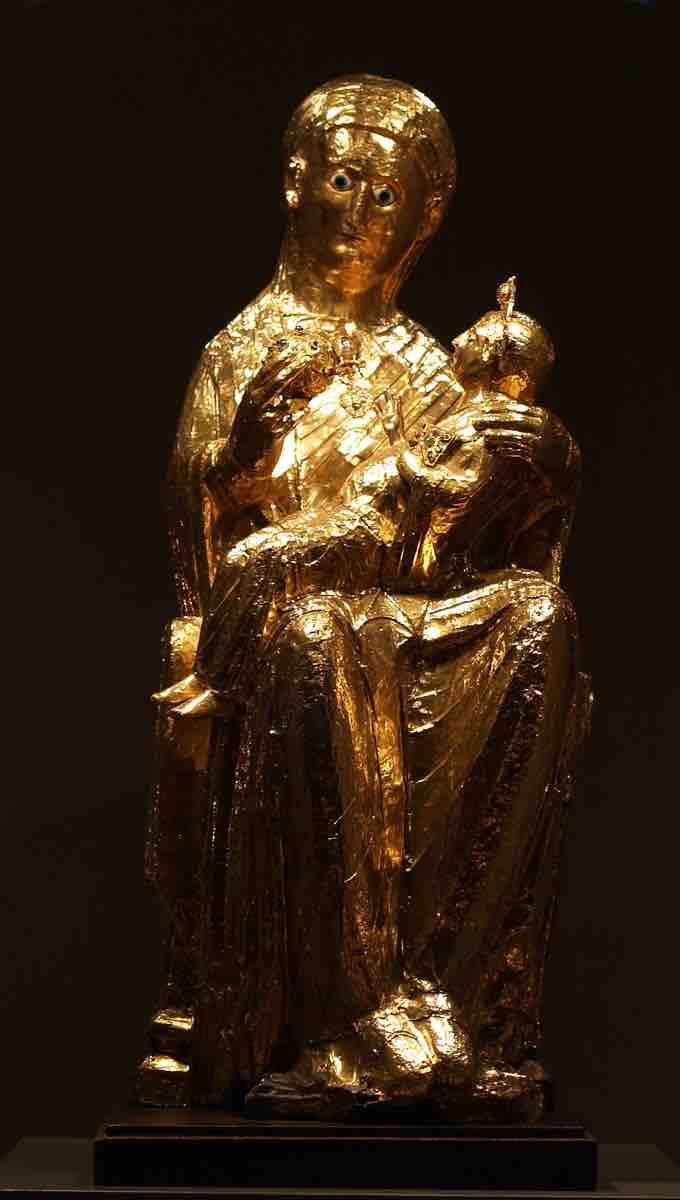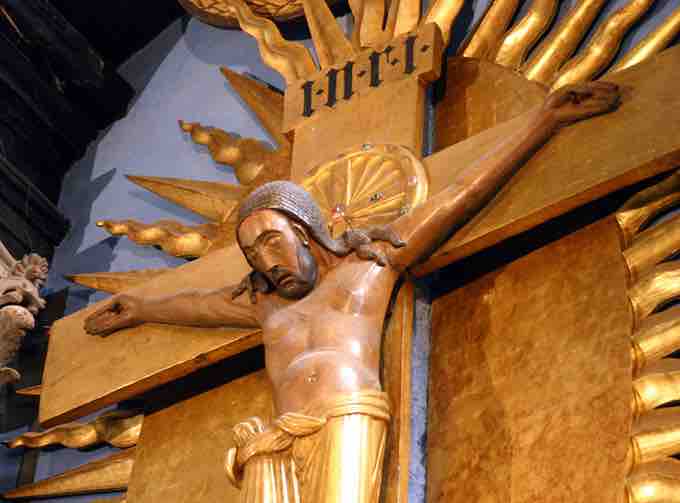The Early Christians were opposed to monumental religious sculpture. Nevertheless, they continued ancient Roman sculptural traditions in portrait busts and sarcophagus reliefs. Smaller objects, such as consular diptychs were also part of the Roman traditions that Early Christians continued.
Small Ivory Reliefs
Consular diptychs were commissioned by consuls elected at the beginning of the year to mark his entry to that post, and was distributed as a commemorative reward to those who had supported his candidature or might support him in future. The oldest consular diptych depicts the consul Probus (406 CE) dressed in the traditional garb of a Roman soldier. Despite showing signs of the growing stylization and abstraction of Late Antiquity, Probus maintains a contraposto pose. Although Christianity had been the state religion of the Roman Empire for over 25 years, a small winged Victory with a laurel wreath poses on a globe that Probus holds in his left hand. However, the standard he holds in his right hand translates as, "In the name of Christ, you always conquer."
Consular Diptych of Probus
Late Roman Empire. 406 CE.
Carolingian art revived ivory carving, often in panels for the treasure bindings of grand illuminated manuscripts, as well as crozier heads and other small fittings. The subjects were often narrative religious scenes in vertical sections, largely derived from Late Antique paintings and carvings, as were those with more hieratic images derived from consular diptychs and other imperial art. One surviving example from Reims, France depicts two scenes from the life of Saint Rémy and the Baptism of the Frankish king Clovis. Unlike classical relief figures before Late Antiquity, these figures seem to float, rather than stand flatly, on the ground. However, we can also see the Carolingian attempt to recapture classical naturalism with a variety of poses, gestures, and facial expressions among the figures. Interacting in a life-like manner, all figures are turned to some degree. No one stands in a completely frontal position.
Carolingian treasure binding
Scenes from the life of Saint Rémy and King Clovis.
The Revival of Monumental Sculpture
However, a production of monumental statues in courts and major churches in the West began during the Carolingian and Ottonian periods. Charlemagne revived large-scale bronze casting when he created a foundry at Aachen which cast the doors for his palace chapel, in imitation of Roman designs. This gradually spread throughout Europe. There are records of several apparently life-size sculptures in Anglo-Saxon churches by the tenth and eleventh centuries. These sculptures are probably of precious metal around a wooden frame.
One example is the Golden Madonna of Essen (c. 980), a sculpture of the Virgin Mary and the infant Jesus consisting of a wooden core covered with sheets of thin gold leaf. It is both the oldest known sculpture of the Madonna and the oldest free-standing medieval sculpture north of the Alps. It is also the only full-length survivor from what appears to have been a common form of statue among the wealthiest churches and abbeys of tenth and eleventh century Northern Europe, as well as one of very few sculptures from the Ottonian era. In the Golden Madonna of Essen, the naturalism of the Graeco-Roman era has all but disappeared. The head of the Madonna is very large in proportion the remainder of her body. Her eyes open widely, dominating her nose and mouth that seem to dissolve into her face. In an additional departure from classical naturalism, the Baby Jesus appears not so much as an infant but rather as a small adult with an adult facial expression and hand gesture.

Golden Madonna of Essen
The Golden Madonna of Essen has a wood core covered by thin gold leaf. c. 980.
Sculpted Crosses
Monumental crosses such as the Gero Crucifix (c. 965–970) were evidently common in the ninth and tenth centuries. The figure appears to be the finest of a number of life-size German wood sculpted crucifixions that appeared in the late Ottonian or early Romanesque period, later spreading to much of Europe. Charlemagne had a similar crucifix installed in the Palatine Chapel in Aachen around 800 CE. Monumental crucifixes continued to grow in popularity, especially in Germany and Italy. The Gero Crucifix appears to capture a degree of Hellenistic pathos in the twisted body and frowning face of the dead Christ.

Gero Crucifix
The Gero Crucifix appears to be the earliest and finest of a number of life-size German wood sculpted crucifixions that appeared in the late Ottonian or early Romanesque period, later spreading to much of Europe.
Engraved stones were northern traditions that bridged the period of early Christian sculpture. Some examples are Nordic tradition rune stones, the Pictish stones of Scotland, and the high cross reliefs of Christian Great Britain. Large stone Celtic crosses, usually erected outside monasteries or churches, first appeared in eighth-century Ireland. Later insular carvings found throughout Britain and Ireland were almost entirely geometrical, as was the decoration on the earliest crosses. By the ninth century, reliefs of human figures were added to the crosses. The largest crosses have many figures in scenes on all surfaces, often from the Old Testament on the east side, and the New Testament on the west, with a Crucifixion at the center of the cross. Muiredach's High Cross (tenth century) at Monasterboice is usually regarded as the peak of the Irish crosses. Whereas the Carolingian treasure binding and the Gero Crucifix attempt to recapture attributes of classical sculptures, the figures on Muiredach's High Cross lack a sense of naturalism. Some have large heads that dwarf their bodies. Others stand in fully frontal poses. This departure from the classical paradigm reflects a growing belief that the body was merely a temporary shell for -- and therefore inferior to -- the soul.
Muiredach's High Cross
Monasterboice, Ireland. Tenth century.